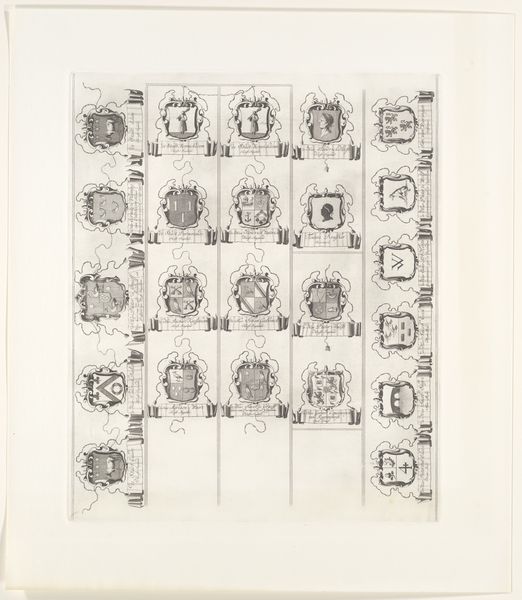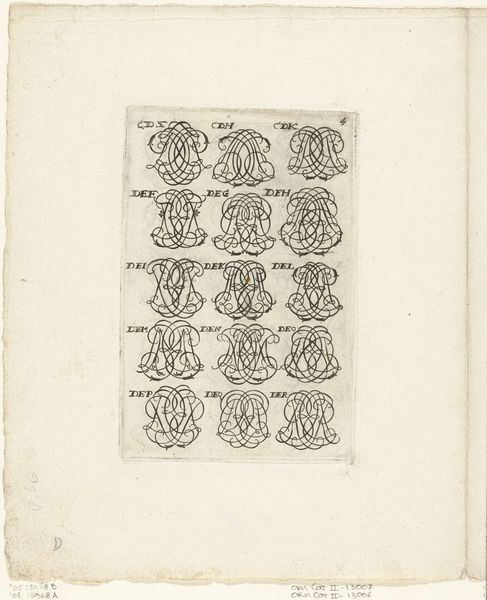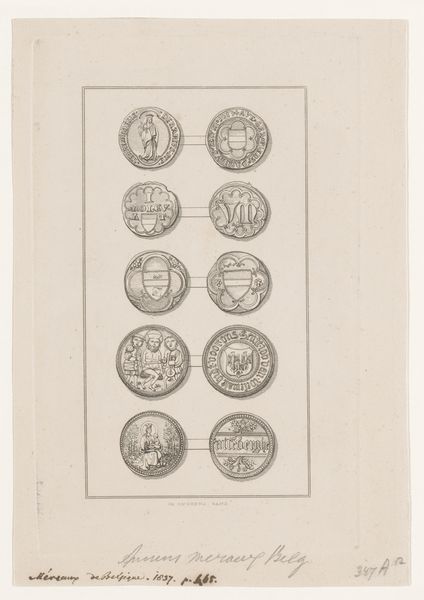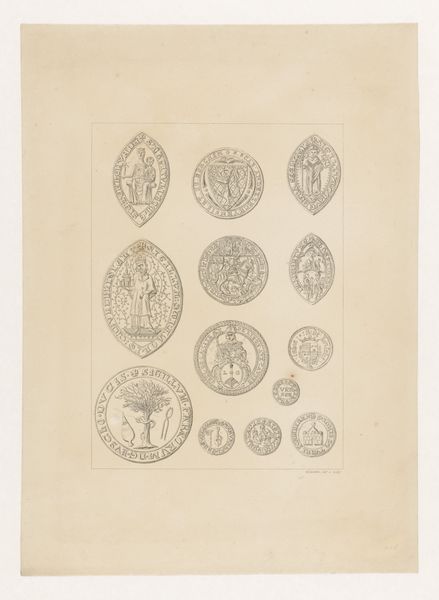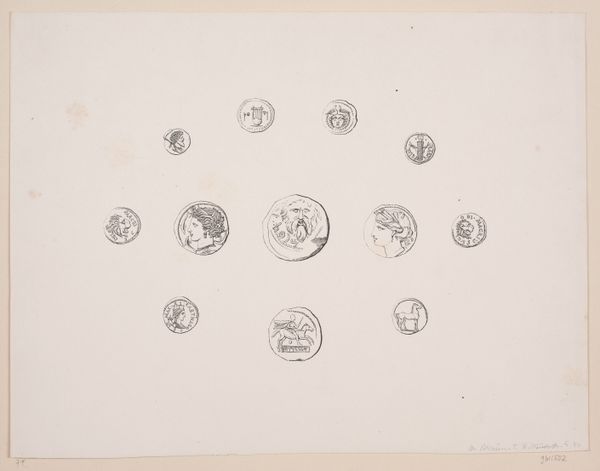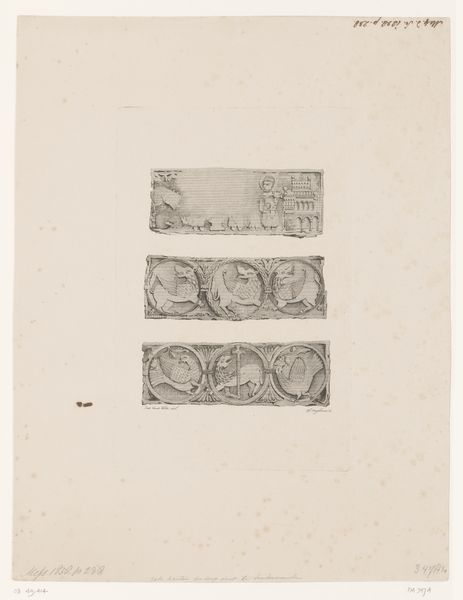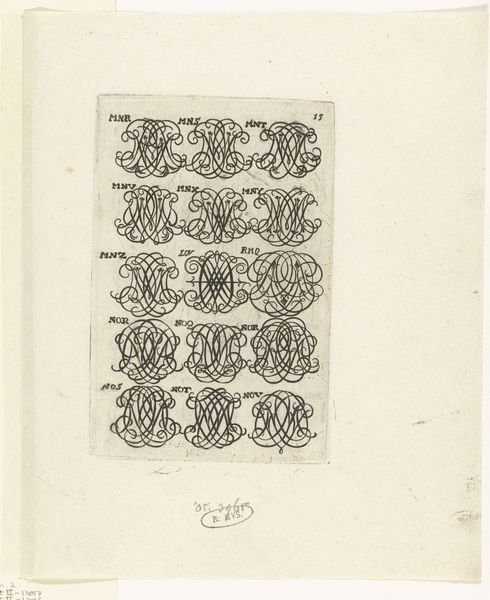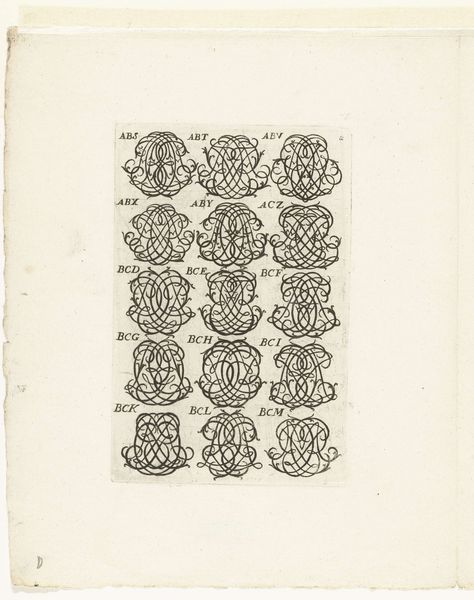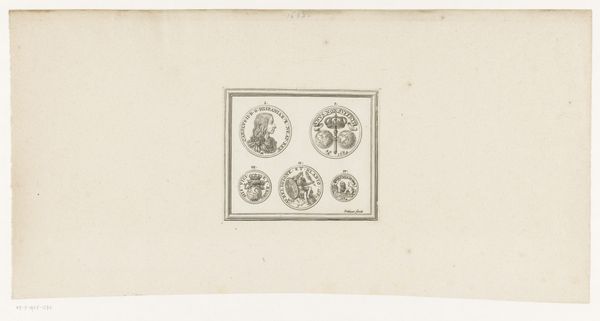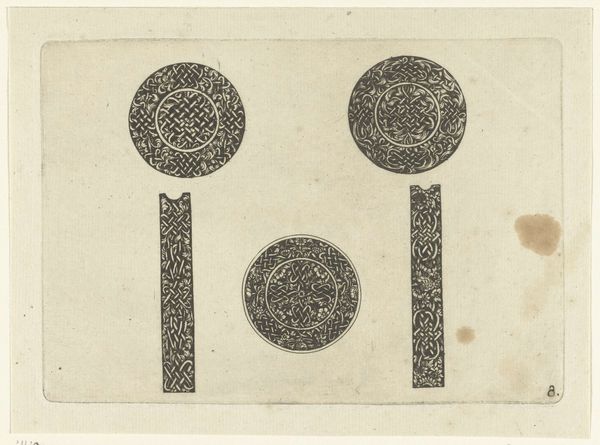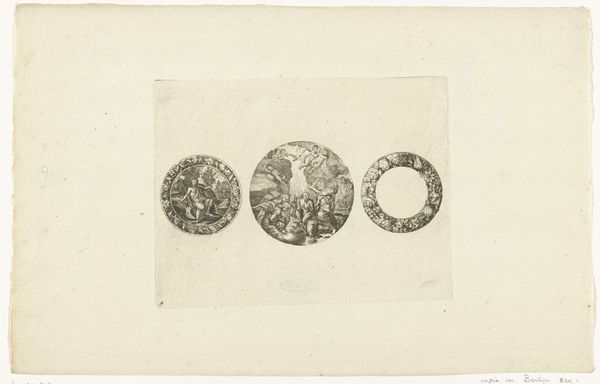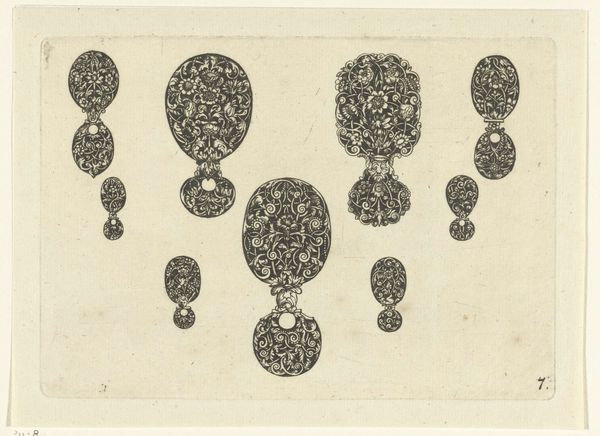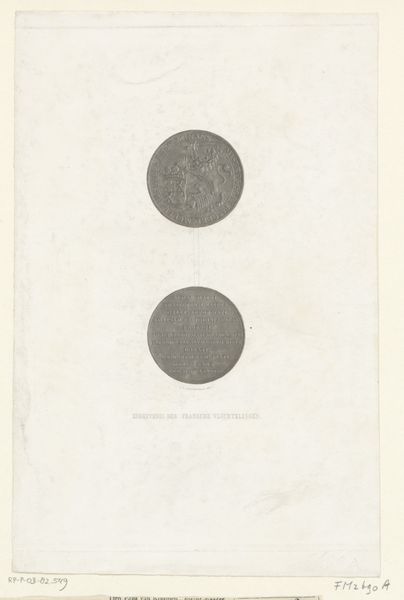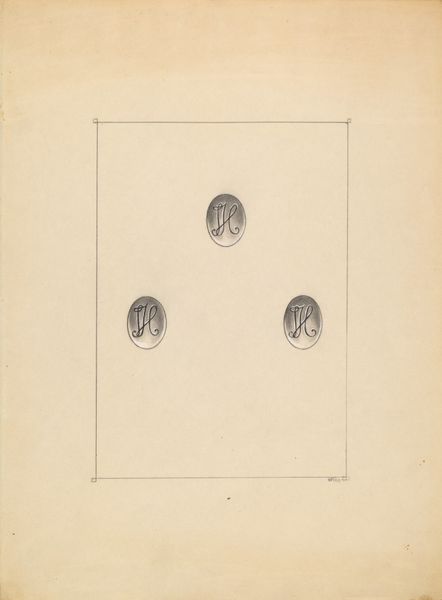
Zeven ronde voorstellingen met scènes uit het leven van Christus c. 1860 - 1900
0:00
0:00
Dimensions: height 235 mm, width 177 mm
Copyright: Rijks Museum: Open Domain
Curator: This print by Johannes Arnoldus Boland, made between approximately 1860 and 1900, is titled "Zeven ronde voorstellingen met scènes uit het leven van Christus," or "Seven round scenes from the life of Christ." Editor: The stark, almost clinical presentation of these miniature scenes creates an immediate sense of detachment. The limited tonal range certainly contributes to that feeling. Curator: Absolutely. These prints, created with ink on paper, situate themselves within a visual tradition where the narrative's power rests as much on cultural literacy as on artistic skill. These are scenes that would have been readily identifiable to viewers at the time, moments imbued with deep theological significance, shaping societal values and moral frameworks. Editor: Yes, and despite the limitations inherent in the printmaking process, there is such precision of line, an intricate detail packed into each tiny circular frame. Look at how each scene utilizes a distinct vanishing point, drawing the eye into a condensed yet fully realized space. It almost feels like looking at a series of carefully arranged coins. Curator: It makes you consider the accessibility of religious imagery during this period. Prints like these played a crucial role in disseminating biblical narratives to a wider audience. The use of the circle— a shape frequently linked to ideas of eternity— is in itself laden with meaning. Furthermore, consider the economic dynamics inherent in print production and consumption during this period and how that influenced whose stories were told, and how. Editor: Yet, this seemingly simple presentation yields a rather complex engagement. Each scene, contained within its own defined boundary, becomes a meditation on specific moments, a fragmented yet cohesive story. I find that contrast—simplicity in presentation but complexity in reading— really compelling. Curator: I think what stays with me is understanding that these prints provided viewers from a specific time access to both shared cultural memory, and religious understanding. Editor: Agreed. It has made me consider just how the intrinsic visual choices reflect, and ultimately direct, the narrative interpretation.
Comments
No comments
Be the first to comment and join the conversation on the ultimate creative platform.
